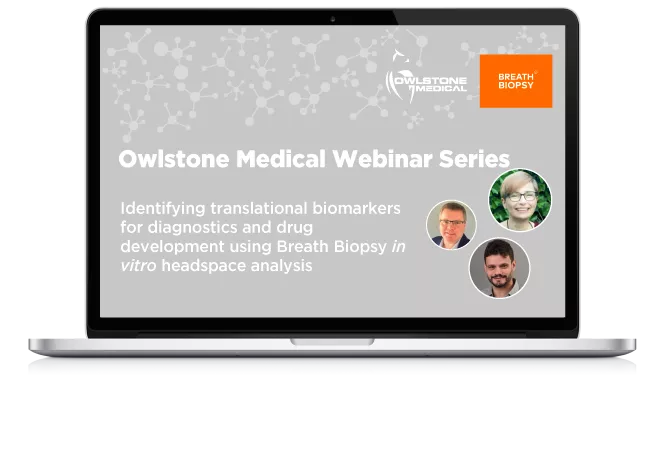
Headspace volatile analysis of in vitro, ex vivo, and biofluid samples
Identify volatile biomarkers relevant to key disease processes through in vitro analysis
INTRODUCTION
Linking breath and biology
Many studies show the potential of breath biomarkers as diagnostic and monitoring tools. Most of the identified biomarkers have hypothesized biological origins, but relatively few have direct evidence demonstrating the relationship between disease biology and abundance in the breath.
Discovering and validating biomarkers for disease is a key stage in developing valuable and effective diagnostic tests for clinical applications. Analysis of in vitro samples allows for greater control over experimental conditions to collect more in-depth, mechanistic data about the production of volatile metabolites in the disease area of interest, as well as response to drug treatments.
Our headspace sampling pipeline can help you to identify volatile organic compounds (VOCs) produced by your samples for the development of volatile biomarkers. We can provide an optimized detection process supported by expert analysis.
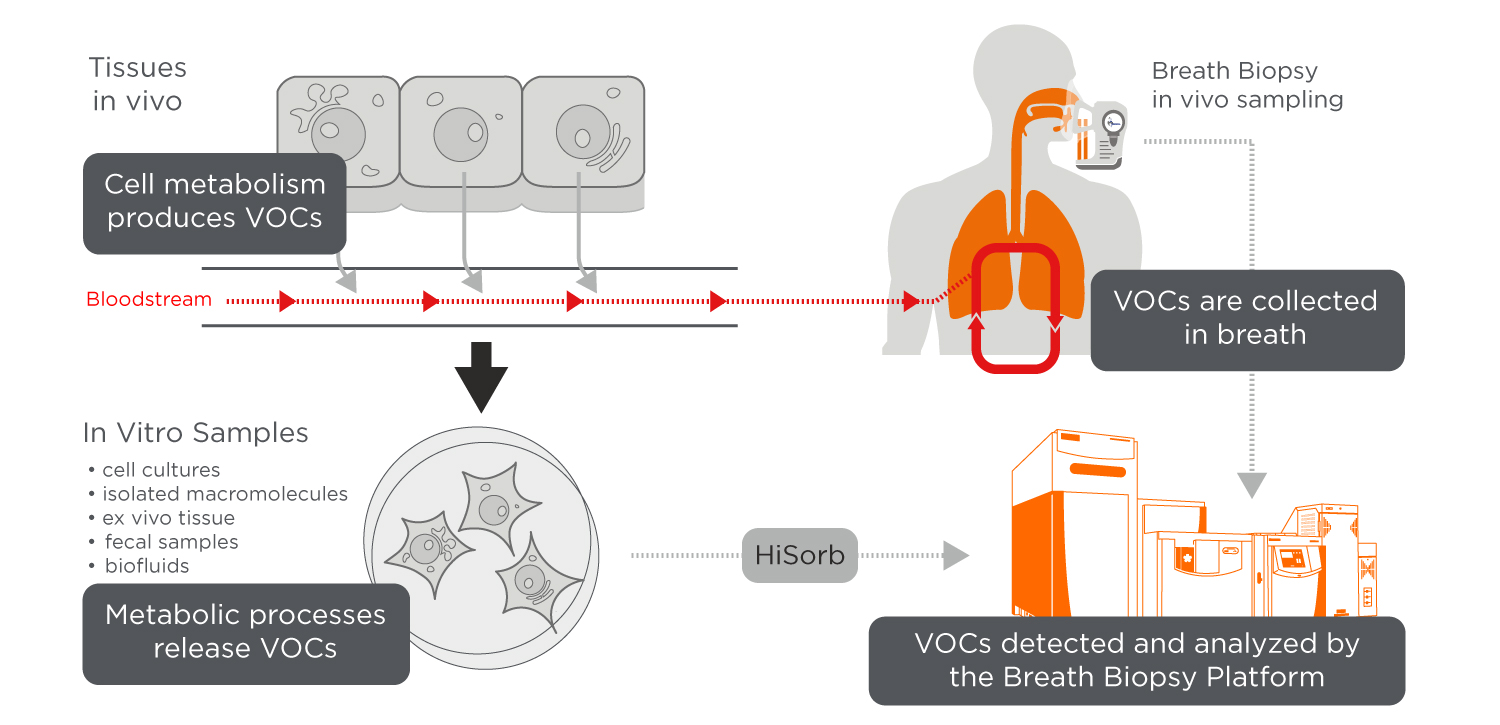
These volatile biomarkers can subsequently be further studied and verified in clinical studies analyzing their concentration in exhaled breath, providing the complete data required that could bring breath tests into clinical practice.
APPLICATIONS
Why do headspace sampling?
- DISCOVERY: Identify clinically relevant candidate breath biomarkers
- DISEASE RELEVANCE: Directly relate disease biology to metabolite abundance
- MECHANISMS: Gain insight into mechanisms underlying disease and drug response
- CAUSE & EFFECT: Dissect metabolites related to the causes and effects of disease
- VALIDATION: Validate the chemical identities of compounds of interest
- REGULATORY APPROVAL: Generate evidence to support clinical approval
- RELEVANCE: Relate your findings to other published literature
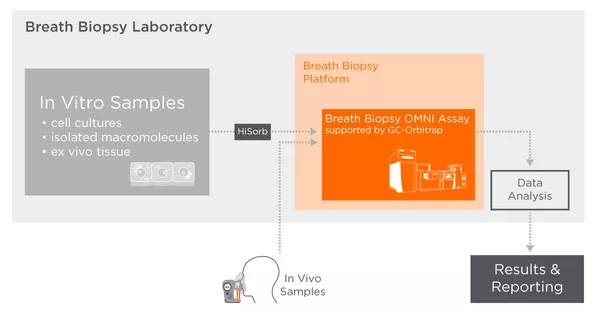
Breath Biopsy headspace sampling
Our headspace sampling capability integrates seamlessly with Breath Biopsy Services. The Breath Biopsy Laboratory is equipped with HiSorb probes which are analyzed on a Centri device for the automated collection of volatile metabolites produced by in vitro cell cultures, macromolecular isolations, ex vivo tissues, biofluids, and fecal samples.
This is coupled to our high-resolution gas chromatography mass spectrometry (GC-MS) biomarker analysis platform. The Breath Biopsy Platform is built around GC-Orbitrap devices and has been optimized for the detection of volatile compounds found in breath. This provides high-sensitivity volatile compound detection, even for low-abundance compounds in the parts per trillion (ppt) range.
Key features:
- Volatile compound collection using automated HiSorb probes dynamic sampling
- Direct from sample collection to HRAM GC-MS
- Suitable for the study of cell cultures, ex vivo tissues, fecal headspace, biofluids and/or macromolecular isolations
- Compare in vitro samples to exhaled breath using the same analytical platform
Contact us to discuss integrating Breath Biopsy into your research:
CASE STUDIES: IN VITRO STUDIES AT OWLSTONE MEDICAL
Lung cancer
Aldo-keto reductases (AKRs) are upregulated in some cancers as an adaptation to oxidative stress and lipid peroxidation. We have used in vitro cell cultures of lung cancer cell lines to target AKRs in these cells and monitor the metabolic processes that produce volatile compounds. To do that we modulated the catalytic activity of AKRs using small compounds and developed knock-out (KO) cells for target AKR genes.
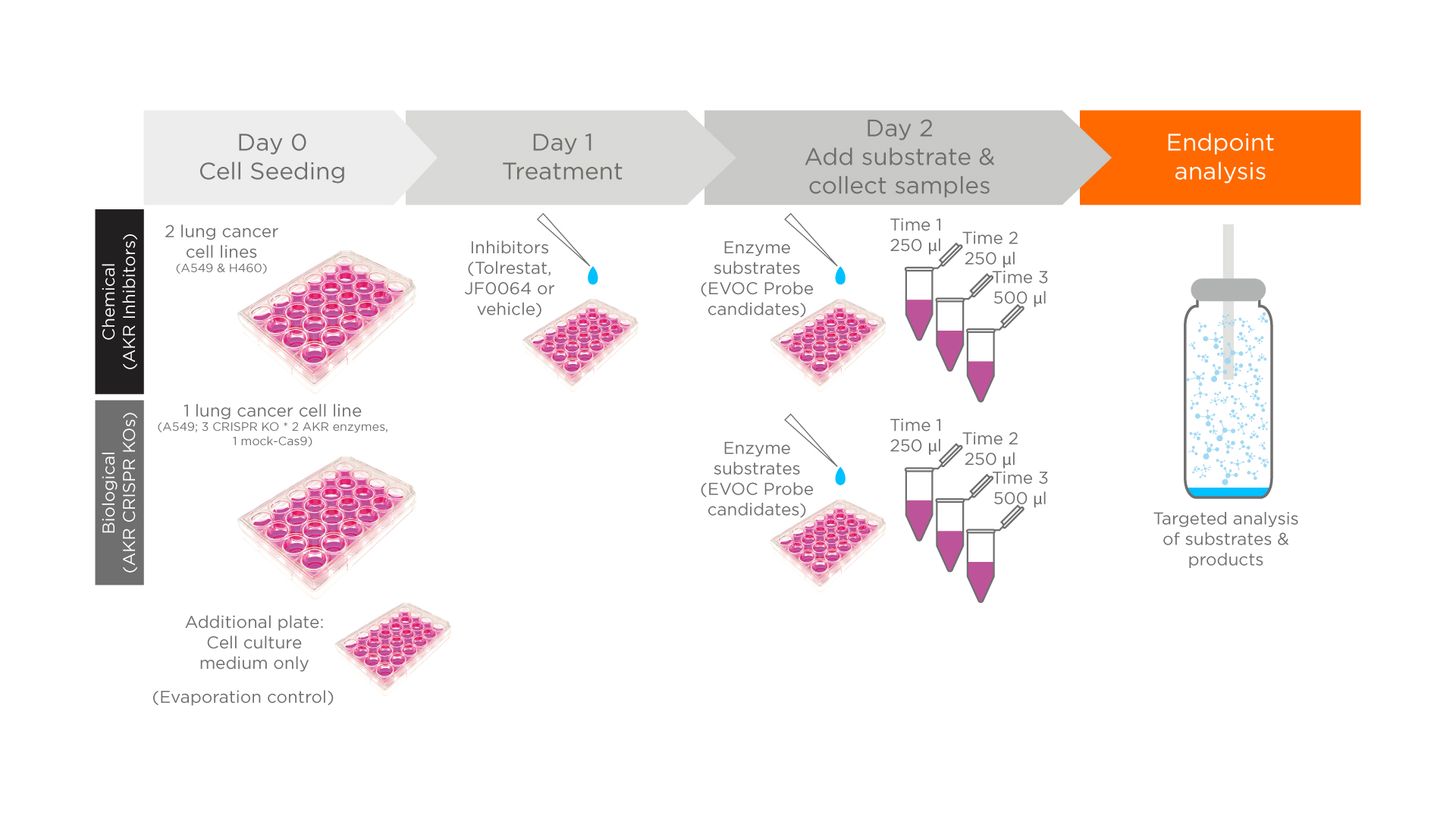
We treated our cell cultures with a range of substrates and monitored the substrate and product levels using the same GC-MS workflow used for the detection of volatile metabolites in clinical breath samples (Breath Biopsy® workflow). This allowed us to demonstrate that the target enzymes were responsible for the metabolization of the substrates and appeared to confirm that in vitro cell cultures, coupled with VOC analysis can return information about genomic manipulations and drug treatments.
Liver disease
We have used in vitro sampling to identify alterations in metabolic pathways induced by chronic liver disease. By treating cell cultures of human primary hepatocytes with substrates we were able to use volatile analysis to find alterations in the bioproduct generation of healthy hepatocytes compared to hepatocytes in which a non-alcoholic steatohepatitis (NASH) phenotype was induced.
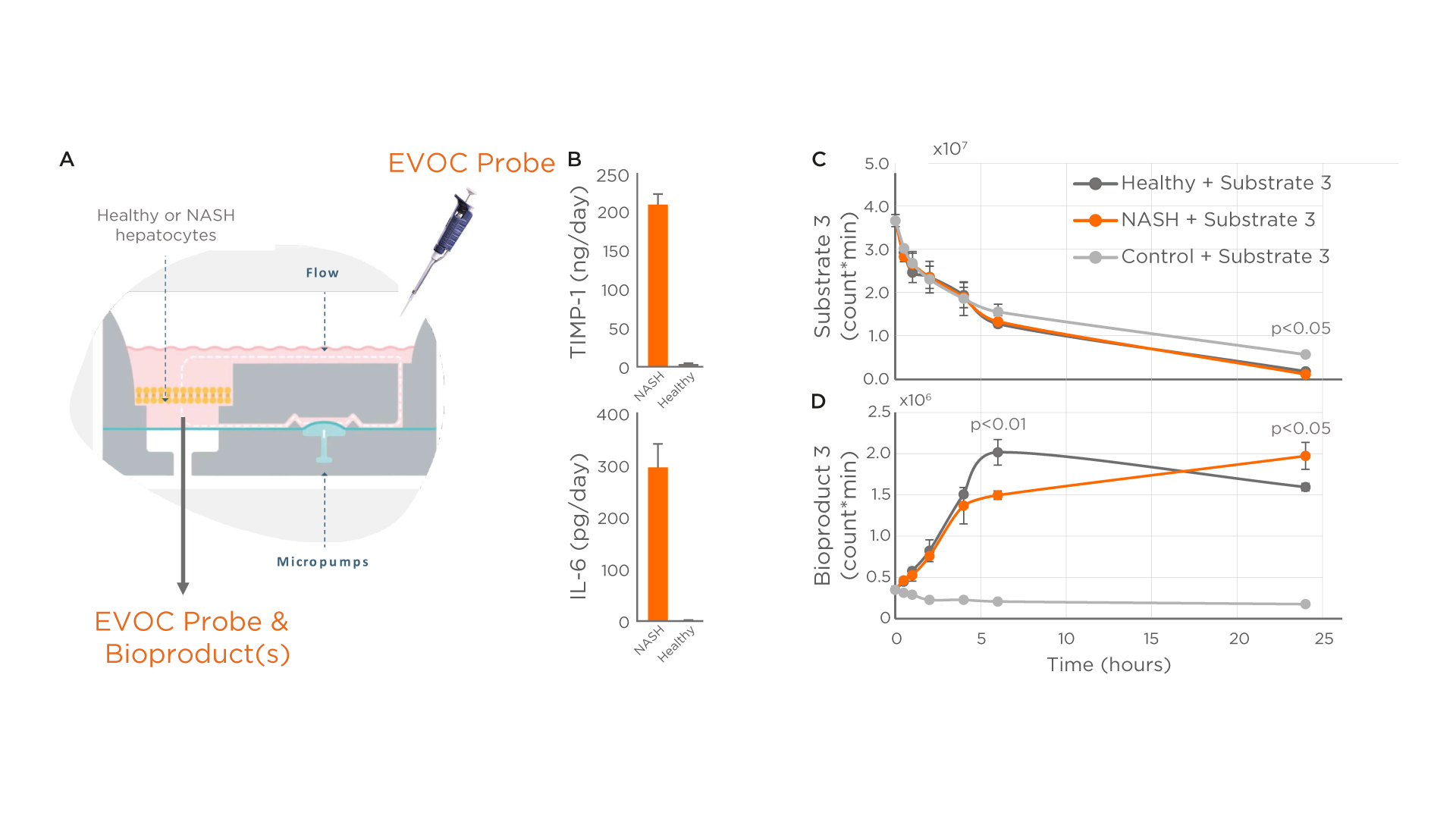
Using pre-clinical models to evaluate the relationship between substrates and metabolism alterations represents a step forward for the identification and assessment of prospective biomarkers for breath diagnosis of disease.
Inflammatory disease
Lipid peroxidation is a biological mechanism associated with many diseases as well as inflammatory immune responses.
We performed in vitro analysis of various polyunsaturated fatty acids to understand the volatile metabolites produced by each lipid species, finding that each fatty acid produces a different complement of compounds which can be detected and quantified using the Breath Biopsy Platform.
We have also investigated the volatile compounds associated with bronchial inflammation.
Using headspace sampling of the air-liquid interface assay of in vitro bronchial mucosa samples, volatile metabolites were collected from cell media headspace and bronchial mucus headspace. Inflammation was induced via bleomycin or lipopolysaccharide (LPS) treatment.
Both bleomycin and LPS were shown to produce distinct changes in volatile profiles across two days in both cell media and bronchial mucus. While some of these changes were shared across each treatment there are also differences, which were likely indicative of differences in inflammation mechanisms.
Analysis of the cell medium yielded more detectable volatile compounds, with a greater distinction between groups and more consistent results across repeats. Volatile compounds such as alkanes and aldehydes were in high abundance, which are compounds known to be related to well-established inflammation responses such as lipid peroxidation.
Further work could verify the identities of these volatile compounds and confirm their mechanistic origins.
Gastrointestinal (Fecal Headspace Analysis)
The analysis of volatile metabolites collected from fecal headspace is already a well-established practice in gastrointestinal disease research. Conducting an analysis of volatiles emitted from fecal samples in parallel with investigations into novel breath-based volatile biomarkers for gastrointestinal disease can be illuminating. Performing cross-matrix data comparisons can highlight key candidate biomarkers, and volatile metabolites that are strongly corroborated across both matrices can help build confidence for further study.
Fecal headspace enriched for volatile metabolites can be collected on sorbent tubes in the same way that breath samples are collected and then analyzed using our Breath Biopsy Workflow.
If you’re interested in conducting an in vitro study as part of your breath research, we can help.
